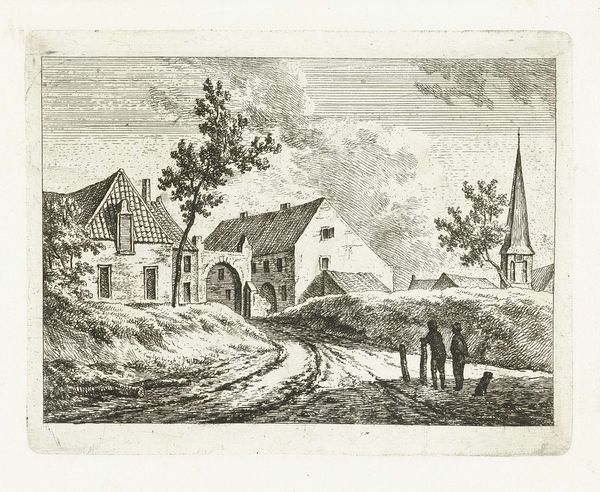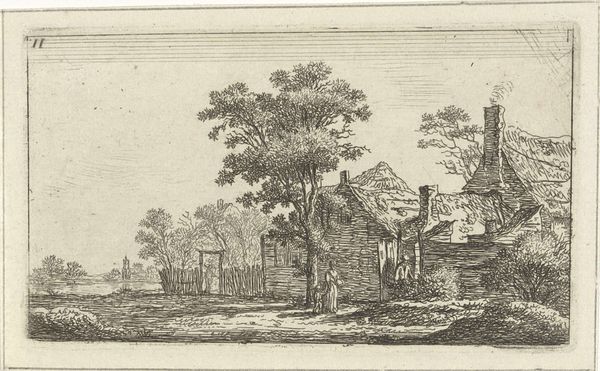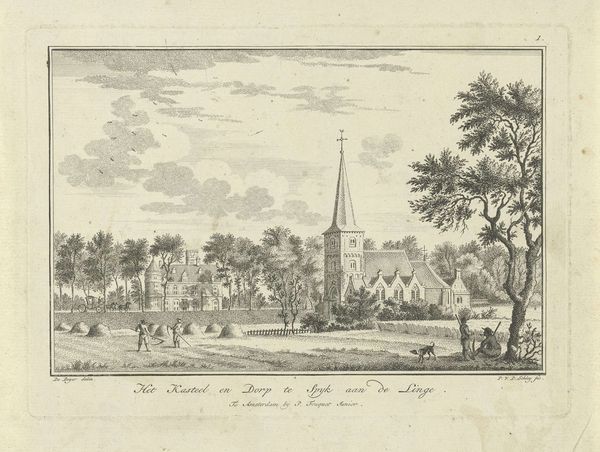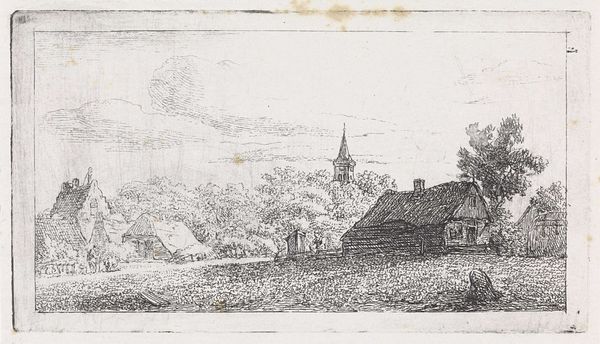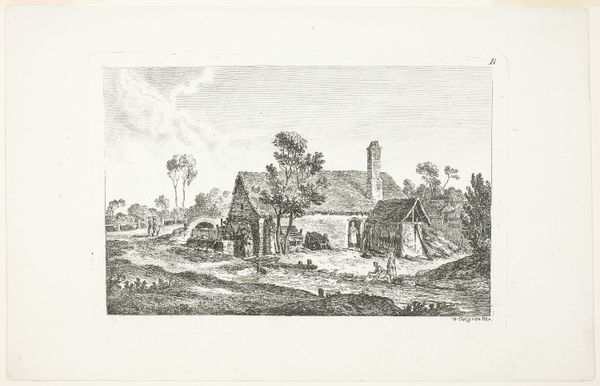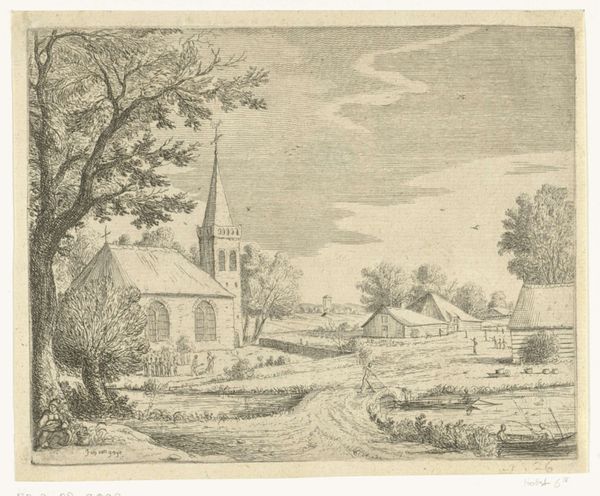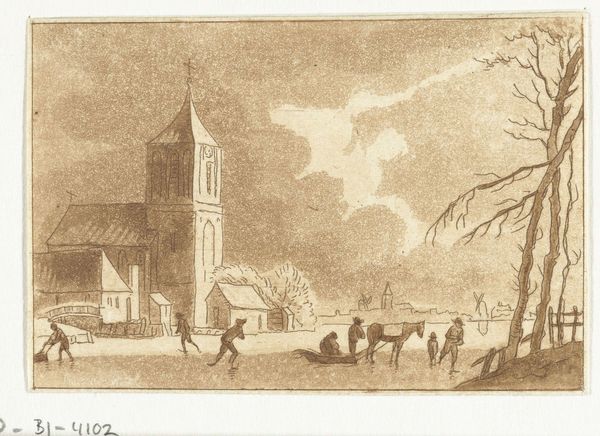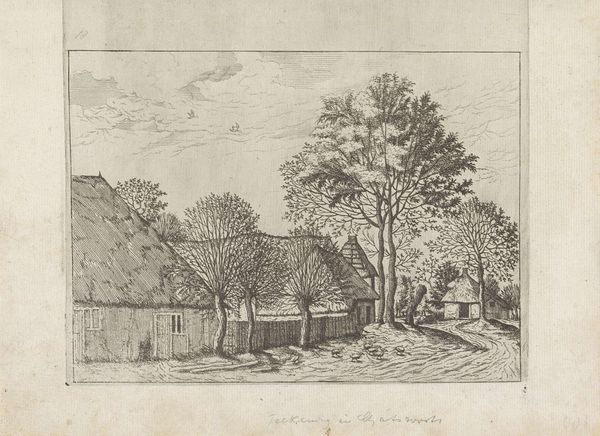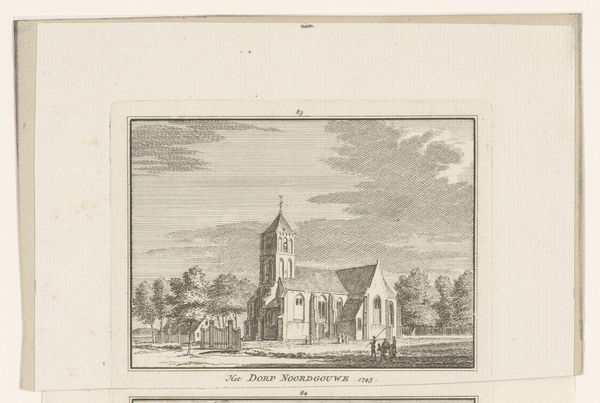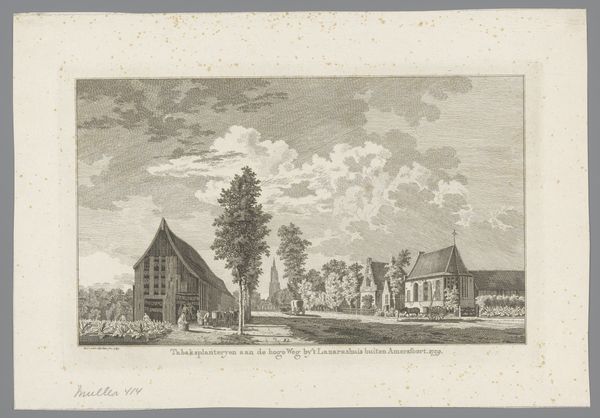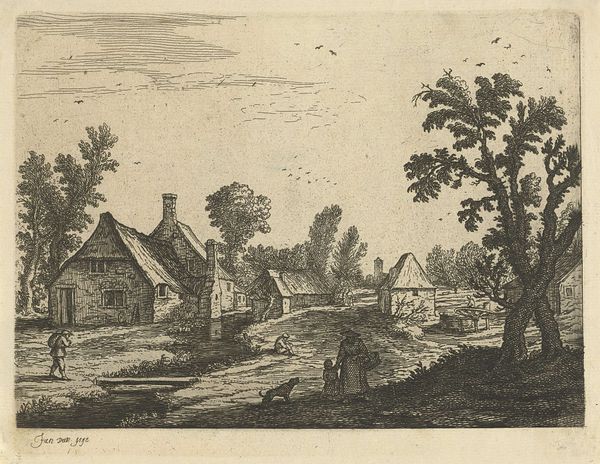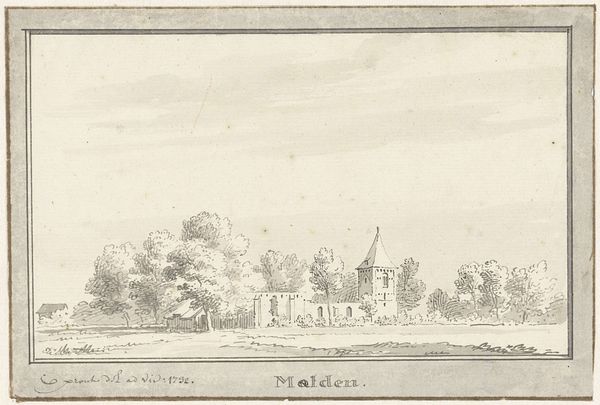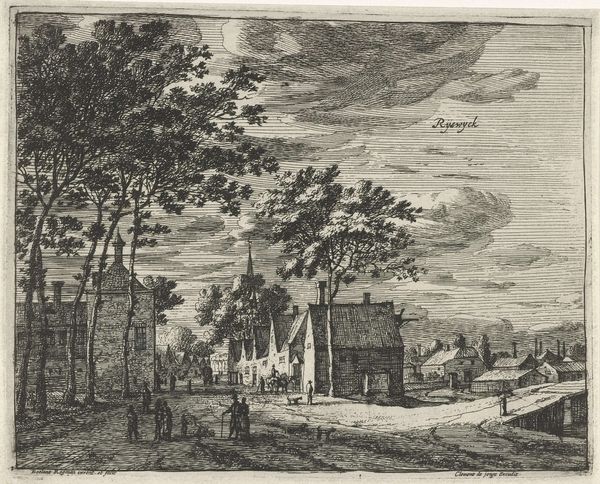
drawing, print, ink, engraving
#
drawing
#
baroque
#
dutch-golden-age
# print
#
pen illustration
#
old engraving style
#
landscape
#
ink
#
ink drawing experimentation
#
cityscape
#
engraving
Dimensions: height 136 mm, width 236 mm
Copyright: Rijks Museum: Open Domain
Editor: Here we have Simon Poelenburg's "Dorpsgezicht," dating sometime between 1602 and 1649. It's a charming little landscape, rendered in ink, featuring a Dutch village scene. I'm immediately drawn to how orderly and self-contained the buildings and foliage are. What do you see in this piece, especially given its historical context? Curator: It’s important to see this print within the context of the Dutch Golden Age, a period of significant urbanization and economic prosperity. Notice how Poelenburg frames a very controlled view of nature, almost as if to assert a kind of cultural dominance over it. It reflects a society increasingly defined by its urban centers, subtly influencing the perception and representation of rural life. How does that structured portrayal impact your initial sense of its "charm"? Editor: I see what you mean. The idyllic charm I felt earlier now feels... calculated. Like a postcard image, a very specific presentation of village life for probably an urban audience. Curator: Precisely. These landscapes weren't just about depicting reality; they played a role in constructing and reinforcing a particular vision of Dutch identity and values. The orderliness we see in the architecture and even the positioning of the figures suggests values related to discipline and perhaps even national pride. The increasing mercantile wealth in the Netherlands enabled wider audiences to afford prints, further disseminating social norms. Does considering that influence your understanding of the artist's purpose? Editor: It completely shifts my perspective! It makes me wonder what this controlled and picturesque aesthetic obscured, or was intended to obscure, about actual rural conditions at the time. Curator: Exactly. We’ve moved from a passive consumption of its ‘charm’ to a critical assessment of its social role, which makes all the difference. Editor: Thanks! I definitely have a much more nuanced perspective now. It’s not just a pretty village scene, but a window into the social and political landscape of the Dutch Golden Age.
Comments
No comments
Be the first to comment and join the conversation on the ultimate creative platform.
